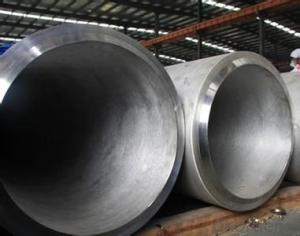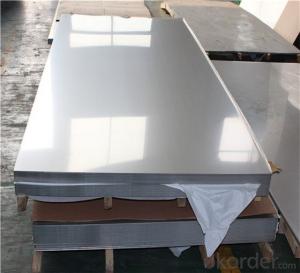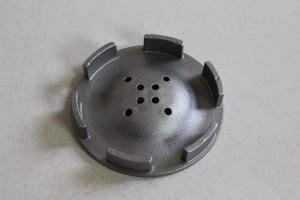Stainless Steel Chimney Cap
Stainless Steel Chimney Cap Related Searches
Best Paint For Stainless Steel Blanket Insulation For Steel Buildings Primer For Galvanized Steel Foam Filter For Stainless Steel H S Code For Stainless Steel Surface Grinding Wheels For Stainless Steel Surface Grinding Wheels For Hardened Steel Hole Saw For Stainless Steel Paint For Stainless Steel Stainless Steel For BbqHot Searches
Steel Mesh Panels For Sale Price For Stainless Steel Scrap Scrap Price For Stainless Steel Price For Stainless Steel Stainless Steel Tank For Sale Stainless Steel Sheets For Sale Cheap High Tea Sets For Sale Stainless Steel Tanks For Sale Stainless Steel For Sale High Density Fiberboard For Sale Solar Hot Water Collectors For Sale Scaffolding For Sale In Uae Scaffolding For Sale In Ireland Scaffolding For Sale In Houston Type Of Inverter For Solar Price Of Shipping Containers For Sale Types Of Inverter For Solar Stock Price For Aluminum Used Solar Inverter For Sale Steel Mesh Panels For SaleStainless Steel Chimney Cap Supplier & Manufacturer from China
Okorder.com is a professional Stainless Steel Chimney Cap supplier & manufacturer, offers integrated one-stop services including real-time quoting and online cargo tracking. We are funded by CNBM Group, a Fortune 500 enterprise and the largest Stainless Steel Chimney Cap firm in China.Hot Products
FAQ
- The pressure rating of stainless steel pipes may vary based on various factors, including the grade of stainless steel, pipe wall thickness, and pipe diameter. Typically, stainless steel pipes have high pressure ratings due to the material's strength and corrosion resistance. However, consulting the relevant standards and specifications is necessary to determine the precise pressure rating for a specific stainless steel pipe. These standards (such as ASME B31.3 or ASTM A312) offer guidelines and calculations to establish the maximum allowable working pressure (MAWP) based on the mentioned factors. To ensure safety and prevent any potential failures or leaks, it is crucial to verify that the pressure rating of the stainless steel pipes is suitable for the intended application.
- The main difference between 410 and 416 stainless steel pipes is their composition and properties. 410 stainless steel is a basic martensitic stainless steel with high strength and good corrosion resistance but limited in terms of heat resistance. On the other hand, 416 stainless steel is a free-machining martensitic stainless steel with added sulfur, which enhances its machinability but slightly reduces its corrosion resistance compared to 410 stainless steel. Therefore, 410 stainless steel pipes are better suited for applications requiring higher heat resistance, while 416 stainless steel pipes are preferred when better machinability is needed.
- The temperature limitations of stainless steel pipes depend on the specific grade of stainless steel used. Generally, stainless steel pipes can withstand high temperatures up to 1200°F (649°C) without experiencing significant deformation or damage. However, the maximum operating temperature can vary depending on the alloy composition and its mechanical properties. For instance, austenitic stainless steels, such as grades 304 and 316, are commonly used in various industrial applications and can typically handle temperatures up to 1500°F (816°C). These grades offer good corrosion resistance and excellent toughness, making them suitable for high-temperature environments. On the other hand, ferritic and martensitic stainless steels, like grades 409 and 410, have lower resistance to high temperatures compared to austenitic stainless steels. They can generally withstand temperatures up to 1200°F (649°C) before significant loss of strength occurs. It is important to note that prolonged exposure to high temperatures can cause stress corrosion cracking and reduce the overall lifespan of stainless steel pipes. Therefore, it is crucial to consider the specific application and choose an appropriate grade of stainless steel that can withstand the desired temperature range. Consulting with a materials engineer or referring to industry standards and guidelines is recommended to ensure safe and reliable operation of stainless steel pipes at elevated temperatures.
- Yes, stainless steel pipes are suitable for solar power plants. Stainless steel is known for its excellent corrosion resistance and durability, making it an ideal material for various applications in solar power plants. These pipes can withstand harsh weather conditions, high temperatures, and exposure to sunlight and moisture without corroding or degrading. Additionally, stainless steel pipes have high thermal conductivity, which allows for efficient heat transfer in solar thermal systems. They are also lightweight and easy to install, making them a convenient choice for solar power plant construction. Overall, stainless steel pipes provide long-lasting performance and reliability in solar power plants, making them a suitable choice for this application.
- Yes, stainless steel pipes can be used for underground irrigation systems. Stainless steel is a durable and corrosion-resistant material, making it suitable for applications where the pipes will be exposed to moisture and soil conditions. It is also a popular choice for underground irrigation systems because it can withstand high pressure and temperature fluctuations. Additionally, stainless steel pipes have a longer lifespan compared to other materials, reducing the need for frequent replacements or repairs. However, it is important to ensure that the pipes are properly installed and insulated to prevent any potential damage from soil movement or other external factors.
- The wall thickness of a stainless steel pipe can be calculated by subtracting the inner diameter from the outer diameter, and then dividing the result by 2.
- In stainless steel tubes, why are there some SS in the back and some standard L, such as 316L and 316SS? What's the difference?
- The strength of the 2 is the sameBut the removal of carbon from stainless steel costs enormous energy, so don't look at carbon from 316 of 0.08% to 0.03% of 316L, but the price is much higherIn conclusion, the later logo, whether it's L, SS, and others, has its different implications, representing the properties of this material













































